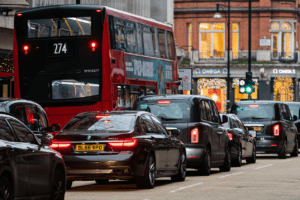IIHS Making Sure Crash Test Equipment Can Handle 9600-Pound EVs

IIHS has been crashing vehicles into barricades for decades. Until now, the heaviest vehicle the organization has tested was a 6000-pound Audi e-tron.With heavier electric vehicles on the way, like the 9640-pound Hummer EV, IIHS wanted to make sure it could handle bringing something that heavy up to speed in the crash chamber.To that end, an old Ford F-150 was loaded with concrete and steel and successfully smashed. IIHS, of course, provides the video receipts.
After a crash, first responders need to approach electric vehicles differently than internal combustion engine vehicles. But even before a collision happens, people who work with crashed cars are changing their approach.
That’s what the Insurance Institute for Highway Safety (IIHS) has discovered as it gets ready to crash test some incredibly heavy EVs. In a video posted to YouTube, IIHS explains that it acquired a junked Ford F-150 that could still roll and loaded it up until the total weight hit 9500 pounds. The heavy tests aren’t meant to see what happens when an old F-150 loaded with concrete blocks and heavy steel plates hits a wall at 40 miles per hour (spoiler alert, it’s not pretty), but to make sure that IIHS’ test equipment can handle testing, for example, the GMC Hummer EV, which in our testing measured the scales at a whopping 9640 pounds. The heaviest vehicle IIHS has yet tested was an Audi e-tron that almost hit 6000 pounds.
“With electric vehicles coming in and that battery weight pushing vehicle mass higher and higher, we want to be able to know that we can conduct the test here,” Raul Arbelaez, vice preside of vehicle research at IIHS, said in the video. “And if we can’t, we need to make some modifications to our crash machine.”
The machines IIHS uses tow cables connected to the crash machine to bring the vehicles up to speed before they hit the barrier. IIHS has 600 feet of runway, but when you’re trying to get almost five tons of steel and batteries to 40 mph, you need a robust propulsion system. Based on the video IIHS released, the system works just fine. Stand by for slow-motion videos of a giant, zero-emission beast being torn apart.
IIHS has studied the effect of vehicle size and weight on occupant safety for decades. In 2003, automakers entered into a “compatibility agreement” that they would work on improving the safety of smaller vehicles when in a crash with a larger one, especially when it came to front-to-front and front-to-side crashes. The agreement was finally adhered to in 2009, and a 2012 paper noted that the reduction in “car crash partner death rates” for SUVs and pickups had dropped, and that intentional safety efforts in specific areas like this one could lead to “a passenger vehicle fleet that is much more compatible in crashes.”
This content is imported from OpenWeb. You may be able to find the same content in another format, or you may be able to find more information, at their web site.




